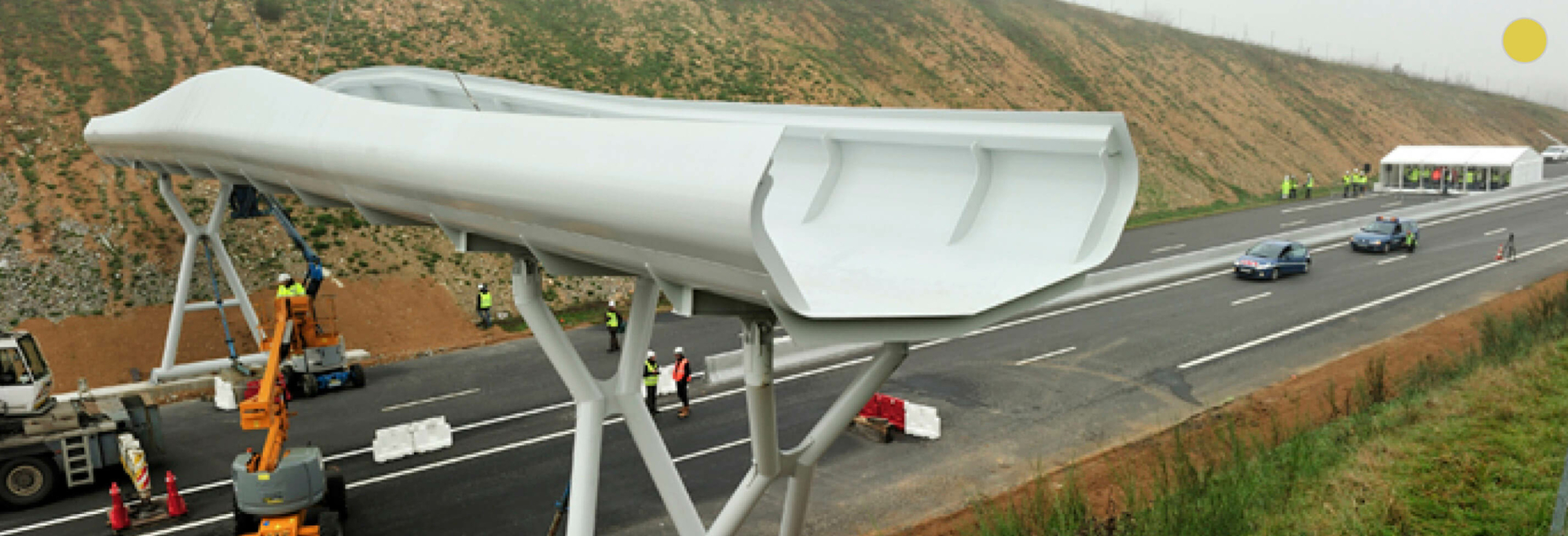RATIONALE. Bat crossing devices
In general, the implementation of bat wire-gantries is not recommended since evidence so far has not proven them efficient (Møller et al., 2016 and references therein; Elmeros et al., 2016; Altringham et al., 2020). However, further solid research is needed to evaluate the effectiveness of other bat crossing designs, i.e., tubular shape, since these may improve echolocation performance and reduce light and noise disturbance, improving the general outcome (Møller et al., 2016; Sołowczuk, 2019). Any bat crossing installation needs to be appropriately monitored to establish that it is really used by bats with the required intensity to be considered effective.
Other mitigation measures have shown better results in providing safe crossing for bats, such as underpasses, viaducts, vegetated wildlife overpasses and landscape bridges (Berthinussen & Altringham, 2012, 2015; Elmeros & Dekker, 2016; Elmeros et al., 2016). Regardless of the mitigation measure implemented, effectiveness increases when it is located on existing bat commuting routes and when forested areas on both sides of the passage guide the bats to it (Møller et al., 2016; Elmeros et al., 2016; Claireau et al., 2019).
General description and targets
Best passages which have been proven to be effective to facilitate safe bat crossing are landscape overpasses, adapted viaducts and wildlife overpasses and underpasses (see Section 5.5.2 – Landscape and wildlife overpasses; Section 5.5.6 – Adapted viaducts (Landscape underpasses); and Section 5.5.7 – Wildlife underpasses) . However specific devices are being tested to funnel bat’s flight.
Bat crossing devices are structures specifically designed to provide safe crossing for bats over the infrastructure, in particular those bats which follow landscape features such as rows of trees. However, the effectiveness of these structures is not established. If they are provided because another type of wildlife passage cannot be built, they must be considered an experimental measure and have appropriate monitoring and feedback regarding effectiveness evaluation.
These devices try to replicate a physical structure which guide bat flight over the infrastructure at a height sufficient to avoid any risk of collision with traffic below. They are dedicated specifically to bats and, because of their cost, they are limited to exceptional situations where there is no possibility of a combined use with other type of overpass, which would be a more effective solution.
There are several types of devices, all of which are considered experimental, including a system of wires stretched over the infrastructure, sometimes equipped with mirror balls to help bats perceive it better, gantries which are equipped with netting, and walkways or metal gantries (Figure 5.5.22).
Points for special attention
- This type of experimental mitigation measure must be placed right at the point of conflict between the transport infrastructure and the bats’ flight route.
- Connection between the flight route and the gantry should be optimal.
- Some tree-top-overpasses have features similar to narrow bat bridges and could therefore combine the needs of several species-groups. However, these situations are found most often only on small infrastructures.
